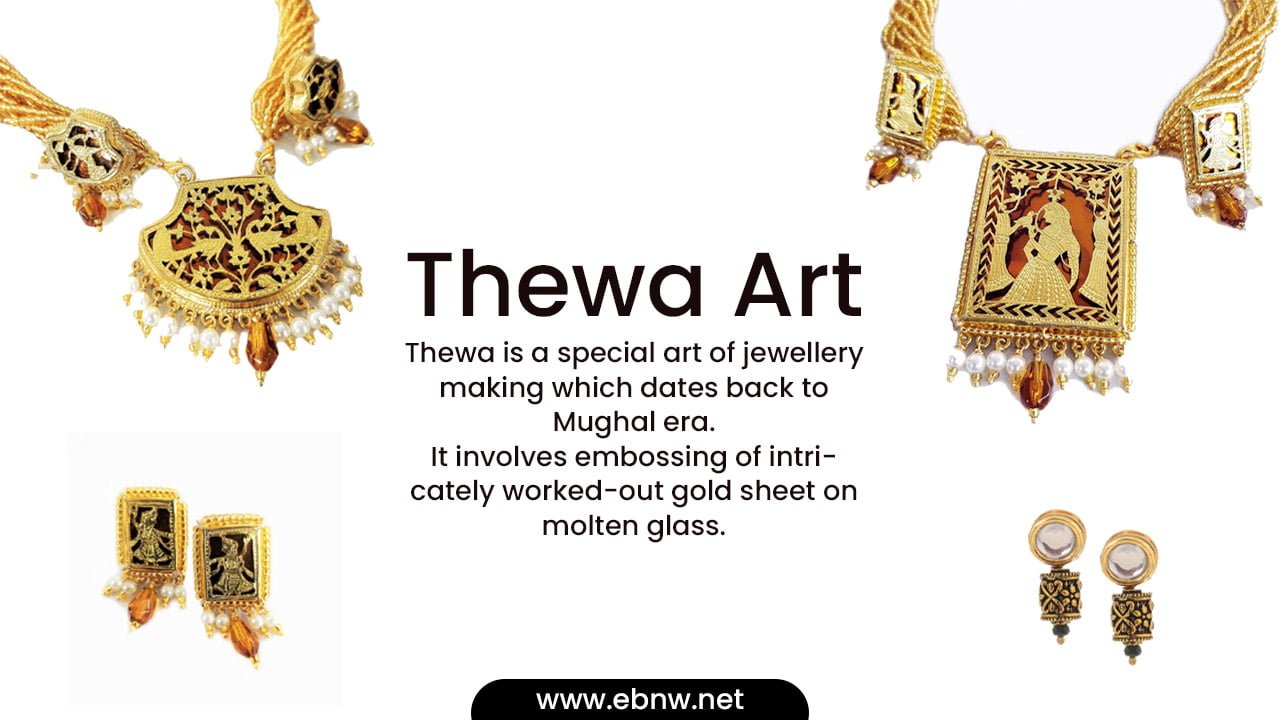Thewa is a special art of jewellery making which dates back to Mughal era. It involves embossing of intricately worked-out gold sheet on molten glass.
This traditional art of fusing 23K Gold with multicoloured glass originated in Pratapgarh district of Rajasthan. The glass is treated with a special process to bring out glittering effects, which in turn highlights the intricate gold work. The whole Thewa piece is hand crafted which takes around a month’s time by skilled artisans.
Thewa uses motifs on jewellery, showcasing the culture, heritage and tales of romance and valour of Rajasthan .
Origin:
The origin of Thewa art goes back to 1707 when a craftsman named Nathu ji Soni from Pratapgarh invented the process to create this art, considered as one of the most expensive art forms. His skills were passed on to the next generation of his family who call themselves “Raj-Sonis”. Many craftsmen from this family have been honoured with esteemed awards including UNESCO, National and State Government awards.
In 2011, the Raj-Sonis of Rajasthan made their way into the Limca Book of Records; this is the only family with nine national awards. In 2015, Mahesh Raj Soni was bestowed with Padma Shree for his excellent Thewa handicraft.


